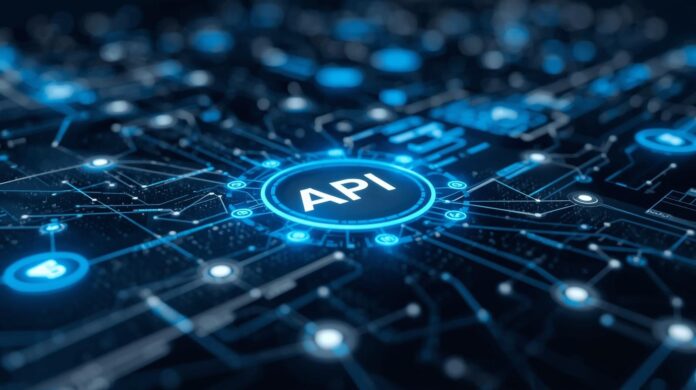
Key takeaways:
- Staffing firms using API automation submit more candidates per recruiter and are far more likely to achieve revenue growth than manual-process competitors.
- Pre-built integration platforms deliver cost savings compared to custom API development, with ROI typically achieved in a few months.
- API-first vendor selection determines competitive positioning for the next 5+ years as AI and advanced analytics require robust API foundations.
Staffing firms leveraging API-enabled automation are filling 22% more jobs without increasing headcount, creating a competitive divide that directly impacts revenue. This advantage stems from Application Programming Interfaces (APIs), the technology connecting software systems to eliminate manual data entry and accelerate workflows.
Why APIs are essential
An API functions as a standardized messenger between software applications. Think of APIs as electrical outlets — you don’t need to understand the power grid to plug in equipment and make it work. Similarly, APIs provide connection points where applications share data automatically. So candidate records flow from your ATS to background checks, timesheet data move to payroll, and job postings distribute across multiple boards simultaneously.
The average enterprise uses close to 1,200 cloud applications, many operating in isolation. Without APIs, recruiters enter the same candidate information multiple times — in the ATS, background check system, VMS platform, and payroll software. Each manual transfer introduces errors and wastes time.
The business case is easy to see: manual data entry costs $28,500 per employee annually according to 2024 Parseur research, with a 4% error rate. APIs eliminate this waste.
Exploring the current API landscape
Leading staffing technology vendors have evolved toward API-first architecture, with Staffing Industry Analysts identifying the “tech stack arms race” as a top trend in 2024.
Top-tier ATS providers now offer comprehensive REST APIs with OAuth 2.0 authentication, providing access to candidate, client, and placement data. Leading platforms feature as many as 300+ pre-integrated technology partners and enable real-time event systems that connect internal events to external business processes. Several staffing software companies position themselves as genuinely API-first through open API programs.
Among VMS platforms, market leaders manage significant portions of global contract workforce spending through API-based integrations. These platforms emphasize standardized data formats and API-based integrations rather than proprietary connections, with implementations typically showing strong ROI and rapid payback periods.
The technical standard has converged on REST APIs with OAuth 2.0, JSON formats, and comprehensive documentation. However, capabilities vary — some vendors offer “API-enabled” systems with limited functionality bolted onto legacy architecture, while true “API-first” platforms designed every feature for programmatic access from inception.
The business benefits of connected systems
API investment delivers measurable improvements across four dimensions:
- Speed: Industry research suggests that firms using integrated staffing technology typically reduce time-to-hire by 30 to 40% compared to manual processes. API integrations particularly accelerate reference checking, background screening, and contract management. Processes that traditionally take weeks can often be completed in days or even hours with proper automation.
- Revenue: Organizations implementing API-driven automation frequently report significant revenue gains through improved candidate reengagement and faster placements. Automated follow-up campaigns can generate substantial incremental revenue from previously placed candidates who might otherwise be forgotten in the database.
- Cost savings: Automated hiring processes can save thousands per hire through reduced administrative time and fewer errors. Compliance automation particularly delivers value by reducing regulatory violations and their associated penalties. Manual data entry costs can be largely eliminated through API integration.
- Data quality: Integrated analytics and reporting systems enable better business intelligence and forecasting. Firms with connected data systems make more informed decisions about resource allocation, market opportunities, and capacity planning, leading to improved operational performance and profitability.
Technical considerations for API implementation and maintenance
Four technical factors matter most for staffing agencies:
- Security: API security has become increasingly critical as cyber threats evolve. Essential implementations should include TLS/HTTPS encryption, zero trust architecture, comprehensive audit logging, and regular security assessments. Data protection regulations carry substantial penalties for violations, and breach costs can devastate staffing firms handling sensitive candidate and client information.
- Authentication: Modern implementations should use OAuth 2.0 for user authentication, API keys for system communication, and JWT tokens for stateless authentication. Object-level authorization prevents the most common vulnerability: unauthorized access to individual records.
- Maintenance: Ongoing maintenance represents a significant portion of total software lifecycle costs, often equal to or exceeding initial development investment over time. Annual maintenance typically runs 15 to 20% of initial development costs, covering security updates, version management, and adaptation to third-party changes.
- Architecture: Hub-and-spoke models place your ATS/CRM centrally with APIs connecting satellite systems. Event-driven architectures use webhooks to trigger automated workflows. For example, a candidate marked “hired” automatically initiates background screening and equipment provisioning. Microservices architecture enables component replacement without disrupting the entire system.
API development versus pre-built integrations
Custom API development costs range from $10,000 for simple APIs to $80,000+ for complex implementations, averaging $20,000. Three-year total cost of ownership reaches approximately $121,000 including maintenance.
Pre-built integration platforms offer different economics:
- Entry-level platforms: Starting at under $100/month for small businesses
- Professional platforms: Mid-range pricing for growing operations
- Enterprise solutions: Premium pricing with annual contracts for large-scale needs
These platforms typically offer thousands of app integrations with no-code interfaces for non-technical users. Over a typical three-year period, integration platforms generally cost a fraction of custom development, often delivering significant savings while providing faster implementation.
Choose custom development only when integrations provide core competitive advantage, workflows are genuinely unique, and you can commit substantial annual budgets. Otherwise, integration platforms deliver faster ROI (typically 2 to 3 months) with predictable costs.
Future-proofing through API-first technology selection
The difference between “API-first” and “API-enabled” platforms shapes long-term flexibility. API-first platforms design every feature for programmatic access with standardized, well-documented APIs. API-enabled platforms bolt APIs onto legacy architecture with limited functionality.
Evaluation criteria include:
- Completeness of API coverage for needed functions
- REST APIs, OAuth 2.0, JSON formats
- Comprehensive documentation with examples
- Security mechanisms and encryption
- Developer ecosystem health
Avoid vendor lock-in through:
- Open standards (OpenAPI specifications, standard protocols)
- Abstracting vendor functionality through internal APIs
- Multi-vendor strategies distributing workloads
- Contractual protections ensuring data portability
- Regular backups to vendor-independent formats
Composable architecture — building from modular components connected through APIs — provides ultimate flexibility.
FAQ for staffing agency leaders
Q: What’s the typical ROI timeline for API investments?
A: Most staffing firms achieve positive ROI within a few months using pre-built integration platforms. Custom development typically requires a year or more to break even, depending on complexity and scope.
Q: Should we build custom APIs or use integration platforms?
A: Unless your workflows are genuinely unique and provide competitive differentiation, pre-built platforms typically deliver substantial cost savings with faster implementation.
Q: What should we look for in platform API capabilities?
A: Prioritize platforms with comprehensive REST APIs, modern authentication standards, extensive pre-built integrations, webhook support for real-time events, and detailed developer documentation.
Q: How much should we budget for API implementation?
A: Pre-built platforms range from basic monthly subscriptions for small operations to premium enterprise pricing. Custom development requires significant upfront investment plus ongoing annual maintenance. Don’t forget to budget for training and potential data migration costs.
Q: What security concerns should we address?
A: Require encryption for data in transit, modern authentication protocols, comprehensive audit logging, and regular security assessments. API security threats continue to evolve, making robust security essential.
Q: How do we avoid vendor lock-in?
A: Choose vendors with open APIs, standard protocols (REST, JSON), comprehensive documentation, and contractual data portability rights. Build composable architecture allowing component replacement.
Q: What’s the first integration we should implement?
A: Start with highest-ROI integrations: ATS to VMS connections, automated reference checking, or AI-powered sourcing tools. These typically deliver significant efficiency improvements immediately.





